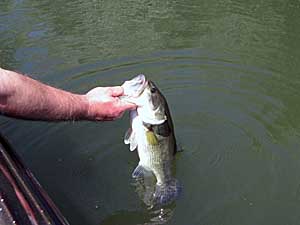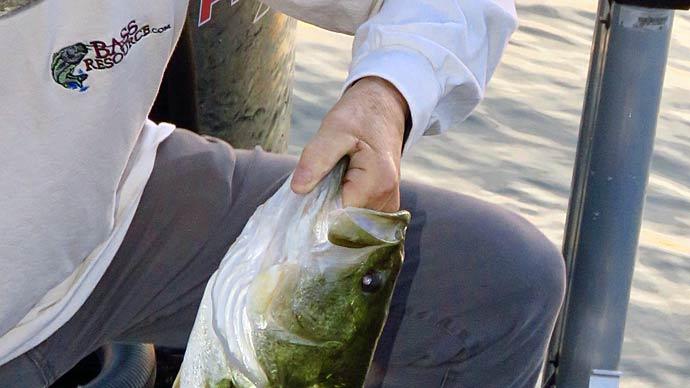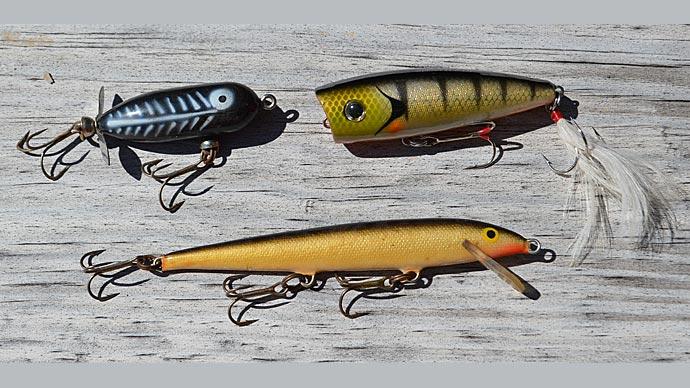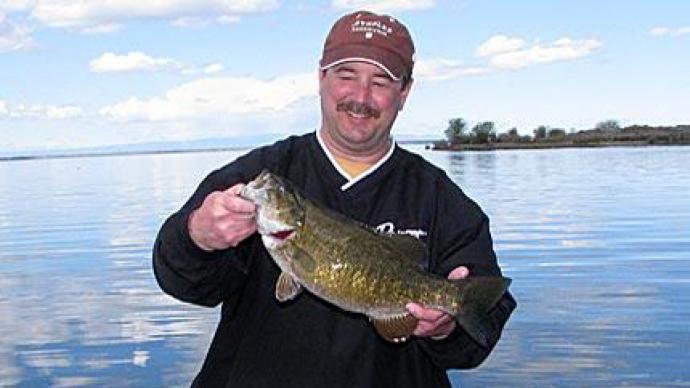
Anglers who put away topwaters after spring may be missing an opportunity to turn summer’s “dog days” into “hawg days.”
You’ll rarely see me this time of year without at least one topwater within reach, although I may be using another lure or fishing an area where topwaters usually aren’t appropriate.
The topwater is my “quick-catch” bait. During hot summer days, schooling bass in an ornery mood will wander from traditional structure to blast shad in open water. When fishing a ledge, long point or a breakline in the middle of a lake, it’s common to see dozens of bass rise to ambush baitfish. They can be caught on other lures, but the topwater is a natural presentation to surface-feeding fish.
Surface lures can be used over deep water, too. I’ve caught several bass using a topwater in 15 feet of water, with little or no structure below. Bass, it seems, will come a long way to hit a topwater in clear water.
That’s when I prefer a Zara Spook. On North Carolina’s Lake Norman, a clear body of water, the Spook has produced tremendous catches in structure-free water as deep as 13 feet, and as shallow as 2 feet around heavy cover.
In warm water, I work the Spook quickly with a consistent rhythm. I don’t stop it (as some recommend); I keep it coming, and that draws heart-stopping strikes near the boat.
A buzzbait produces similar results if the water is muddy or marked with lily pads, stickups and stumps. I use a constant retrieve with this lure also, although I either speed it up or slow it down until I know how bass want it that day.
All topwaters are productive over submerged weed beds. Bass suspend in thick vegetation during summer’s steamy, listless days. Although few lures can reach fish in vegetation, a noisy, erratic surface plug does the job. Topwaters are an obvious choice during low-light conditions, but don’t discount them during midday.
Perhaps the most versatile topwater is the minnow-type plug, such as the Bang-O-Lure, Smithwick Rogue or Long A Bomber. These are my favorites because they cast well against the wind. You can twitch minnow plugs along the surface, jerk-and-pause them just beneath the surface or retrieve them like a crankbait.
Although I may choose to fish a Spook or buzzbait over shallow water, I still keep a minnow plug tied on another rod. It’s a great follow-up lure when bass blow up on the Spook or buzzbait without getting hooked.
If a minnow lug doesn’t work, a weightless plastic worm is another alternative. While fishing shallow weed beds during a New York tournament a few years ago, I had 15 bass explode my buzzbait without getting hooked. Yet I managed to catch them by following up with a plastic worm. Berkley’s Hand Poured PowerBait Finesse Worms work well when faced with this scenario.
Short strikes or misses are common with topwater lures. There are, however, a few tricks you can use to offset such mishaps.
For example, I recommend sliding the eye of a large single hook over the barb of a buzzbait hook to eliminate those short strikes. If that doesn’t help, use a large treble hook.
On Spooks, I remove the trebles from the lure’s body and reattach them with split-rings. The change drops the hooks a little farther in the water and increases hookups.
I don’t alter hooks on minnow plugs, but I will replace a split-ring on the line-tie with a Berkley Cross-Lok snap, or tie a King Sling (loop) knot to the eye. In either case, the lure swings freely on retrieve. I tie the same knot to Zara Spooks.
Fast-moving topwaters are tools for locating bass in new areas. You may not catch every fish that slaps at the bait, but once one gives away its location, you know to slow down and fish the area more thoroughly.
Of course, I fish topwaters for the best reason – it’s thrilling. And that’s what bass fishing is all about!
Fore more articles, quick tips and much more visit HankParker.com.




